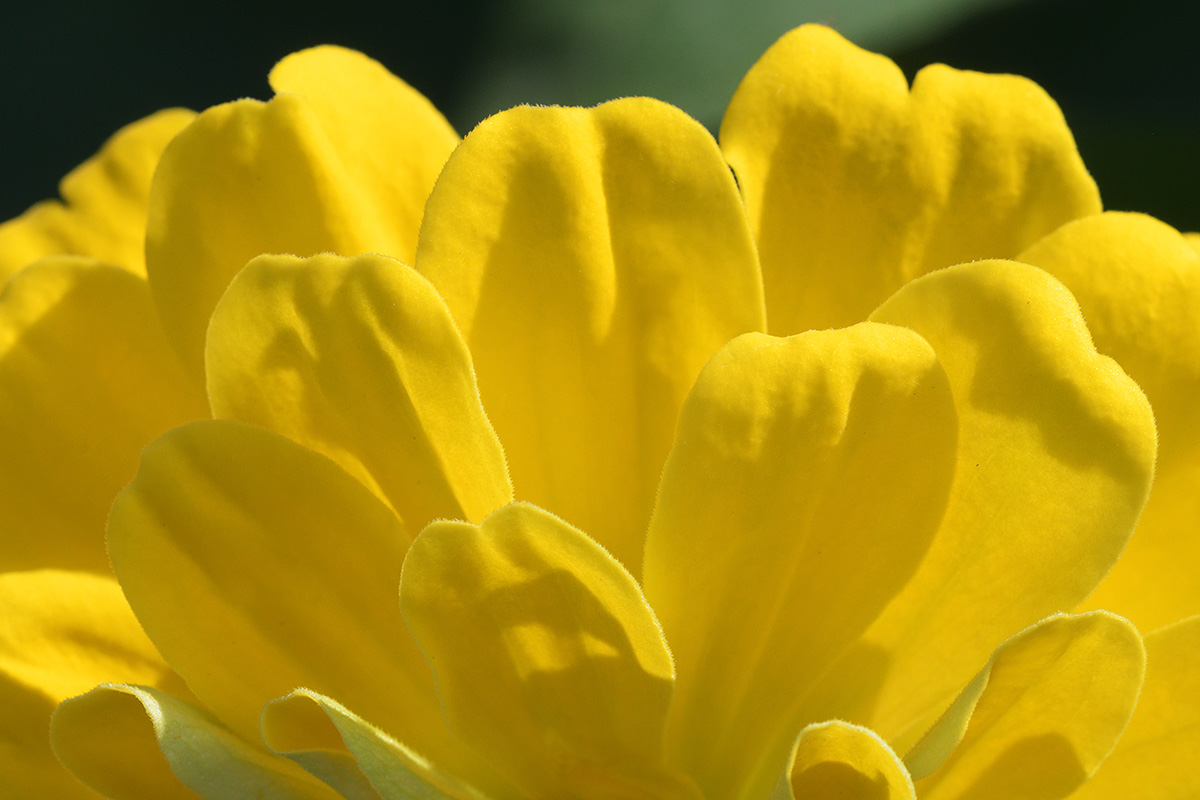Flowers have bright colors in order to attract pollinators such as bees and butterflies. The various colors of flowers are determined by their genes which direct cells to produce different color pigments. The most common pigments in flowers are anthocyanins with a color range from white to red to blue to yellow to purple and even black and brown. Another prominent pigment class are the carotenoids which are often responsible for yellows, oranges, and reds. While many flowers get their colors from either anthocyanins or carotenoids, there are some that can get their colors from a combination of both.
When a flower is yellow, for instance, the cells in the petals have produced a pigment that absorbs all the colors of the sunlight but yellow. When you look at that flower, it reflects yellow light and, thus, it appears to be yellow.
The bloom in today’s photo is a garden zinnia (Zinnia elegans).
